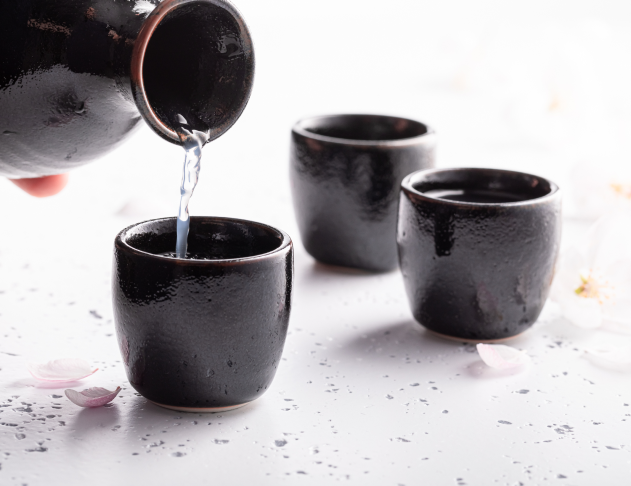
- Home
- Software & Support
- Consulting & Services
- ResourcesBest practicesPractical guidesWhite papersVideosBlogBest practicesPractical guidesWhite papersVideosBlog
- Research
- About Us
- Contact

What do a Russian banana, a masquerade, and a purple majesty have in common? From a recent publication by Sharma et al. (2022) we discovered that these are each cultivars of the humble potato. They ran a two-groups study comparing OEQ data with check-all-that-apply (CATA) question data to find out what type of information can be expected from open-ended questions (OEQs). The reason that their study appealed to us is that we are using a lot of OEQs in our studies lately. Each method has its strengths and weaknesses. There were several OEQs per sample, which took consumers longer to complete than the one CATA question. So which is the best method to use and when? That question is a hot potato, but the short answer is that both question types have a place. Probably I yam alone in thinking that there could have been more potato jokes in the paper. Follow this link to dig into this and other December publications from the Compusense Academic Consortium.
Title : Open-ended question method investigation: A study with mashed potatoes
Authors : Chetan Sharma, Marianne Swaney-Stueve, Edgar Chambers IV, Sastry S. Jayanty, Martin J. Talavera
Link : https://onlinelibrary.wiley.com/doi/abs/10.1111/joss.12804
Title : The effects of feeding benzoic acid and/or active dry yeast (Saccharomyces cerevisiae) on fatty acid composition, sensory attributes, and retail shelf-life of beef longissimus thoracis
Authors : M S Williams, B Mandell, K M Wood, B M Bohrer
Title : Exploring the synergistic effects of essential oil and plant extract combinations to extend the shelf life and the sensory acceptance of meat products: multi-antioxidant systems
Authors : Nastaran Khodaei, Marika Houde, Stéphane Bayen & Salwa Karboune
Link : https://link.springer.com/article/10.1007/s13197-022-05653-4
Title : Effect of process parameters on vitamins and sensory acceptability in micronutrient-fortified soymilk prepared by small-scale batch processing
Authors : Dallin M. Hardy, Oscar A. Pike, Bradley J. Taylor, Michael L. Dunn
Link : https://onlinelibrary.wiley.com/doi/full/10.1002/fsn3.3161
Title : Structural and sensory changes in short-dough biscuits: addition thaumatin and sucrose reduction effects
Authors : Laura Oliveira Silva, Miriam Mabel Selani, Erick Saldaña, Thais Lomonaco Teodoro da Silva, Maria Aliciane Fontenele Domingues
Title : The effect of dairy proteins on the oral burn of capsaicin
Authors : Brigitte A. Farah, John E. Hayes, John N. Coupland
Link : https://ift.onlinelibrary.wiley.com/doi/abs/10.1111/1750-3841.16400
Title : Incorporation of okra (Abelmoschus esculentus (L.) Moench) seed powder into fresh rice noodles with tapioca starch improves postprandial glycemia, insulinemia and satiety in healthy human volunteers
Authors : Dimeng Yang, Huey Lee Lew, Ying Yuan Mak, Sean Jun Leong Ou, Jie Ai Lim, Yuyun Lu, Cassandra Li Yi Seah, Magdalene Qiao Hui Tan, Dejian Huang, E Shyong Tai, Mei Hui Liu
Title : Variation of chemical and sensory profiles of blackcurrant (Ribes nigrum) juices produced from different cultivars of European origins
Authors : Ye Tian, Saila Karhu, Mika Virtanen, Kaisa M. Linderborg, Baoru Yang, Oskar Laaksonen
Title : Sensory properties of 6-and 18-month-stored wines made with pectinase-producing non-Saccharomyces yeasts
Authors : Victoria D. Paup, Jesse J. Aplin, Rachel I. Potter, Charles G. Edwards, Jungmin Lee, Carolyn F. Ross
Link : https://ift.onlinelibrary.wiley.com/doi/full/10.1111/1750-3841.16418
Title : Structure, texture, and sensory properties of plant-meat hybrids produced by high-moisture extrusion
Authors : Pinja Pöri, Heikki Aisala, Julia Liu, Martina Lille, Nesli Sozer
Link : Structure, texture, and sensory properties of plant-meat hybrids produced by high-moisture extrusion
Title : Market potential and value‐added opportunities of cold‐hardy berries and small fruits in the Intermountain West, USA
Authors : Sumedha Garg, Rachel Leisso, Sun-Hwa Kim, Emily Mayhew, Mei Song, Bridgid Jarrett, Wan-Yuan Kuo
Link : https://ift.onlinelibrary.wiley.com/doi/abs/10.1111/1750-3841.16426
Title : Oral exposure to sodium chloride without subsequent consumption does not alter salt taste function in adults, a cross-over intervention study
Authors : Isabella Hartley, Nanna Riis, Djin Gie Liem, Russell Keast
Title : Physicochemical and sensory characteristics of pasta enriched with blue whiting (Micromesistius poutassou) fish protein hydrolysate
Authors : Diako Khodaei, Aisling Forde, Francesco Noci, Lisa Ryan
Link : https://ifst.onlinelibrary.wiley.com/doi/abs/10.1111/ijfs.16278